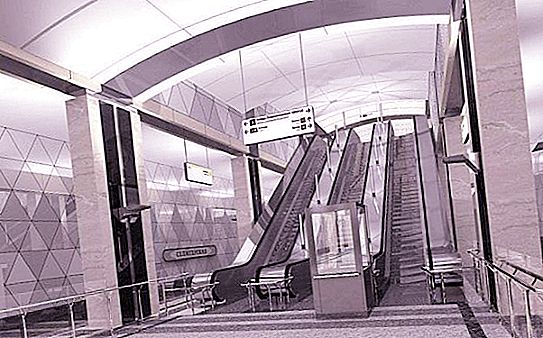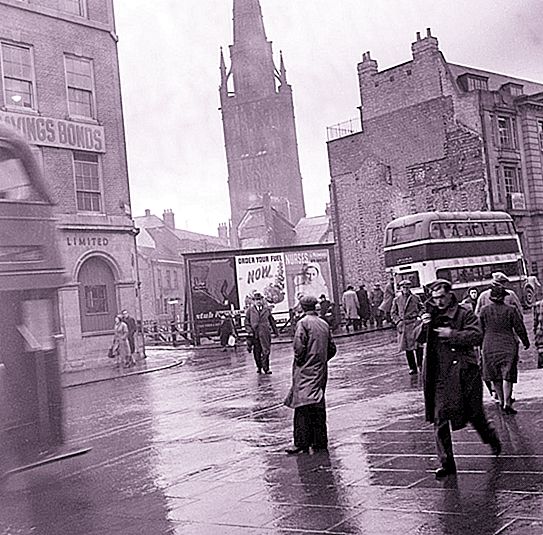Rostov the Great is an ancient city. In the records of 826 there are references to its existence. The main thing to see when visiting Rostov the Great is the sights: museums and individual monuments, which number about 326. Including the Rostov Kremlin Museum-Reserve, included in the list of the most valuable cultural objects of Russia. A visit to this city is included in the famous Golden Ring of Russia route. There are many museums in Rostov the Great. Here are some of them.
The most important museum in Rostov the Great

The museum-reserve occupies the territory of the Kremlin. Among all the museums of the Yaroslavl province, it is the only one of federal significance. Its complex includes 14 monuments representing various buildings. The museum has scientific value, they study history, architecture and archeology. This is the largest complex of museums in Rostov the Great (photo below).
The history of the Kremlin
The territory of the Kremlin is surrounded by a solid wall that does not have a defensive function. The Rostov Kremlin was conceived as an Orthodox paradise with snow-white temples, bells and a pond. The Kremlin was to serve as the residence of clergy. Its territory can be divided into southern, central and northern parts.
The construction of the Kremlin dates back to 1650, it was erected under Metropolitan Ion Sysoevich. The beginning of the Kremlin was laid with the construction of a new Bishop’s yard on the site of an old wooden one. Parts of its buildings still remain. The master-mason Pyotr Dosaev was rebuilding the new courtyard. All buildings on the territory of the Kremlin belong to different years, which allows you to follow the changes in architecture. The construction was completed in 1683 under Metropolitan Joasaph.
In 1787, the meetings of the diocese were moved to Yaroslavl. Then the territory of the Kremlin remained abandoned. No services were conducted in the temples; premises were given for warehouses. Metropolitans were ready to demolish the buildings, but in the 1860s, the Rostov merchants set about restoring the entire complex at their own expense.
In 1883, on November 10, after restoration, the first museum was opened in the building, in which church antiquities were presented. There was an exposition in the White House. At this time, the Rostov Kremlin was assigned the status of a museum. The first exhibits of the museum were worn out icons and church utensils. Throughout its existence, the museum has collected a large collection of exhibits. In 1922, the museum was given a collection of paintings by avant-garde artists.
In 1953, the complex again had to be restored, since it was partially destroyed by the August tornado.
In 2010, a proposal was received to give the whole complex of the Rostov the Great Kremlin to the church, but it was met with protest, since the Rostov Kremlin is of particular importance as the Rostov Veliky Museum-Reserve.
The famous film "Ivan Vasilievich changes his profession" was shot on the territory of the Rostov Kremlin.
Assumption Cathedral

The Assumption Cathedral is part of the attractions of the Rostov Kremlin. It was built before the Kremlin began to be built. The first cathedral, built on the site of a modern temple, burned down in 1160. Then the cathedral was rebuilt anew in 1204 and in 1408, but each time either a fire or a collapse destroyed it. In the period from 1508 to 1512, a brick church was built. And during the construction of the court of bishops, this church was partially reconstructed. The tornado of 1953 demolished the domes from the temple, and soon new domes and roofs were rebuilt, which were more in line with the earlier buildings of the temple.
It is absolutely known that in one of the buildings of the Assumption Cathedral, Sergius of Radonezh was baptized. In addition, one of the ministers of the monastery was the father of the hero Alesha Popovich.
The Cathedral stands on Cathedral Square, surrounded by a low fence, next to the Bishop's Court. For its construction, brick and white stone were used. The height of the cathedral is 60 meters. The cathedral has five chapters, four of which are located in the corners, and the largest, fifth dome, is located in the center. The architecture of the cathedral resembles the Moscow Kremlin. The facade of the building is decorated with shovels, windows located in 2 tiers are separated by a belt of decorative arches. The chapters rest on decoratively decorated high light drums. A drum is the cylindrical part of the building on which the dome rests.
The internal painting of the temple preserved both very old frescoes and newer ones. From the annals it is known about the artwork that took place in 1581. Then, in 1659, masters S. Dmitriev and I. Vladimirov were engaged in painting. In 1669, the painting was not yet finished, and Kostroma masters G. Nikitin and S. Savin came to their aid. But the fire of 1671 destroyed part of the frescoes, the painting had to be updated. In 1843, new frescoes were painted, which destroyed the old ones. In 1950, during the restoration, parts of murals dating to the 18th, 16th and even 12th centuries were discovered. Also preserved is the iconostasis, built in 1730 in the Baroque style.
Belfry
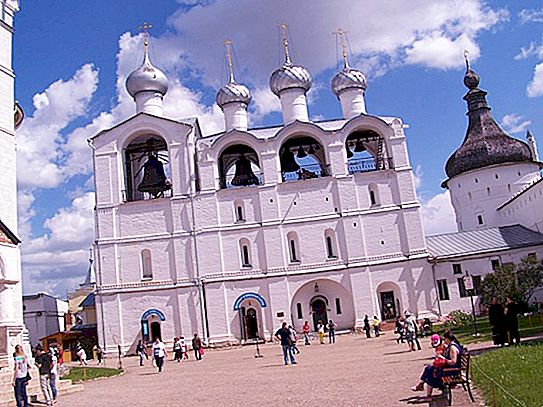
The belfry, built in 1682, adjoins the temple. Despite the almost a hundred-year difference from the start of construction, the Assumption Cathedral and the belfry are made in the same style. Initially, the belfry consisted of 3 parts. The first were cast 2 domes - Swan and Polyeleiny. The domes were tuned in a minor way. But the Metropolitan wished that the domes were rebuilt in a major manner. He invited the master casting bells Terentyev Flora. The master cast the largest bell in the belfry. Its total weight is 2000 pounds, and the weight of the tongue is 100 pounds. The master made a bell, which, in accord with other bells, gave the major structure of the fret. They say that the accuracy of casting the bell is 99.67% in order to make the desired chord with other bells. The new bell received the name "Sysoy" in honor of the father of the Metropolitan. An extension was made for him to the existing belfry, as he was too big.
In 1689, the belfry consisted of 13 bells. And at the end of the 19th century, 2 more bells were added. And to this day, 15 bells hang in the belfry of the Rostov Kremlin.
They wanted to remove the bells for transfusion into weapons for participation in the Swiss war. But the metropolitans did not allow this. They gave emperor Peter I the supplies of silver utensils from the monastery, and then also paid their own money so as not to give the bells. It was no longer possible to continue construction on the territory of the Kremlin, since the metropolitans no longer had funds. But the famous bells, then and now, remained untouched. During the civil war, when the new government wanted to get rid of reminders of the tsarist regime, they wanted to remove and pour the domes for industrial needs. But thanks to the efforts of the museum director D. Ushakov and the narcotic A. Lunacharsky, the bells were rescued. After another misfortune came: in 1923 the belt broke, on which the language of the largest bell was suspended. Then the tongue had to be hung on a metal rod. This changed the sound of the bell. Experts believe that it is necessary to outweigh the bell language in its former place.
On the lower floors of the belfry is the church of Jesus' entrance to Jerusalem.
Hodegetria Church

There is a church in the bishop's yard. It was built in 1693 in the Baroque style. By the time the construction of the church began, the fence of the Bishop’s court was already built. Therefore, the builders had to make the church so that it did not look alien.
The church building is two-story. Under church needs, only the second floor was always used. A distinctive feature of the appearance of the church from other Rostov churches is the presence of a balcony, which is stretched along the perimeter of the entire second floor.
Facing the church, made in the technique of rust, was painted in bronze color. Rust - these are even pieces of faceted stone, located close to each other.
Inside the church there are stucco cartouches not accepted for churches. These are architectural miniatures, which usually include an incised roll or scroll inside which there is a coat of arms or inscription. Cartouches were painted immediately after their installation. During the desolation of the courtyard, in the second half of the 19th century, the cartouches were dilapidated. By the arrival of Nicholas II in Rostov the Great they were updated. But in 1950, the cartouches were whitewashed, which finally hid the painting. After 2000, the cartouches were restored.
Now in the building of the church is a museum exhibition.
The main expositions of the Rostov Kremlin Museum-Reserve

In the complex of the museum of the reserve are several museum collections. To understand their location, on the ground floor of the Red Chamber building there is a map of the territory of the Kremlin, screens with which you can see all the collections of museums in the city of Rostov and its region.
To see the art of Ancient Russia, you need to go to the Samuil building. It presents an exposition with icons, castings, carvings and church items made of precious metals.
The temple of Hodegetria presents the largest collection of church objects, icons and sculptures. This exposition is called - "Gold and Azure Shines".
The museum also has halls in which visitors can see the history of Rostov and the region. They present archaeological finds - tools, the remains of prehistoric animals. And in the building of the Red Chamber are exhibits related to the later history of the region.
Another famous exposition is the Museum of Enamel in Rostov the Great.
Museum of enamel
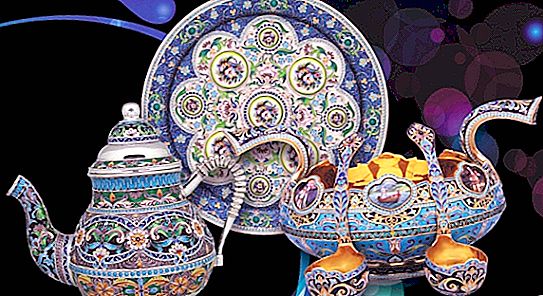
Enamel is an ancient art of miniature artistic decoration, which implies the image on the enamel of detailed scenes. Such work requires high skill of the artist and is a complex manufacturing process. This type of fishing is considered elitist.
The Enamel Museum is located in the building of the existing Rostov Enamel factory, which was opened 15 years ago and is now the only representative of this industry in Russia.
The museum presents an exposition telling the 200-year history of the formation and development of enamel, life and skill of the creators of enamel miniatures. During the tour, visitors will be shown the process of making enamels, rare specimens created with the participation of great jewelers and artists. Moreover, participants in the tour will be able to try to create such a miniature on their own. The museum also has a souvenir shop where you can buy enamel.
Museum of the Frog Princess

The Frog Museum in Rostov the Great was opened at the Frog Princess Hotel in 2012. The building in which the museum is located belonged to the merchants Malyshev and was built in 1790.
The idea of creating a frog museum in Rostov the Great was taken from the work of B. Rybakov. "Paganism of ancient Russia." The book says that among the ancestors of the Rostov people - the Finno-Finnish tribe Merya - the frog was sacred. It is assumed that the tale of the Frog Princess has its origins in the Rostov region.
The exposition at the Museum of the Frog Princess in Rostov the Great will plunge visitors into a fairy tale. It presents the interiors of a peasant's hut, which includes a stove, table, benches and other attributes of rural life. And the museum presents an exposition consisting exclusively of various statues of frogs, there are about 4000 of them.
In addition to exhibits in the Rostov Veliky Museum, an interactive program is offered for children. It includes a battle with Koshchei, trials for a beautiful bride, treats from a magic stove and other fabulous adventures.
The Frog Museum is the most fabulous of all the museums of Rostov the Great.
Museum of Merchants.
The Merchant Museum is located in the house of the city estate. This estate until 1918 belonged to the merchant Kekin. Then, until 1999, it housed an agricultural technical school. After that, the building was given to the Rostov Kremlin State Museum-Reserve. In 2008, the Museum of the Merchants of Rostov the Great was opened here.
The museum presents an exposition that reveals the life of the merchants on the example of the Kekin family. Inside the building, the interiors of the rooms that were during the life of the Kekins family were recreated. Also, the exhibition presents documents, photographs and other exhibits belonging to this famous family. So, on the example of one family, the life of the Rostov merchants is shown.
This museum also hosts temporary exhibitions.
In addition to museum exhibits that are part of the Rostov Reserve museum complex, there are other interesting museums in Rostov the Great.
Art Gallery "Horse"
This gallery displays the work of the artist Mikhail Selishchev. In addition to paintings, paintings, panels and enamel miniatures, a collection of household items from Rostov 19th-20th centuries is presented.
Museum "Lukova Sloboda"
A museum dedicated to onions, the traditions of its cultivation and use for various purposes. It provides interactive programs for children in which you can try to weave a braid out of a bow, make a talisman or doll, and also paint something with batik. The museum offers tea with onion bread.
Museum "Pike yard"
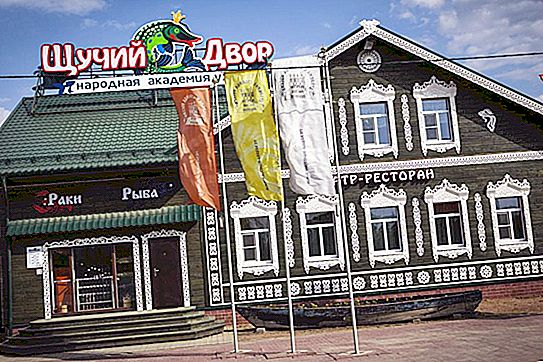
Interactive space for children with parents. Here they talk about the legends and tales of the lake, on the banks of which Rostov the Great was built. And they also show the theatrical program "By Pike Command." This is the most unusual museum of Rostov the Great.
Museum "Golden Hive"
The purpose of the exposition is to talk about the development and traditions of beekeeping in Russia. Part of the museum is indoors, and part is in the open. Among the exhibits are types of beehives and beekeeper’s inventory. During the tour you can try different varieties of honey and kvass on honey.
House of Crafts
The exposition includes unique beauty products from black-glazed ceramics, lace, products from birch bark and wood sculptures. During the tour, you can observe the work of folk craftsmen. And also learn to weave from birch bark and leather, making dolls, painting wooden products.

